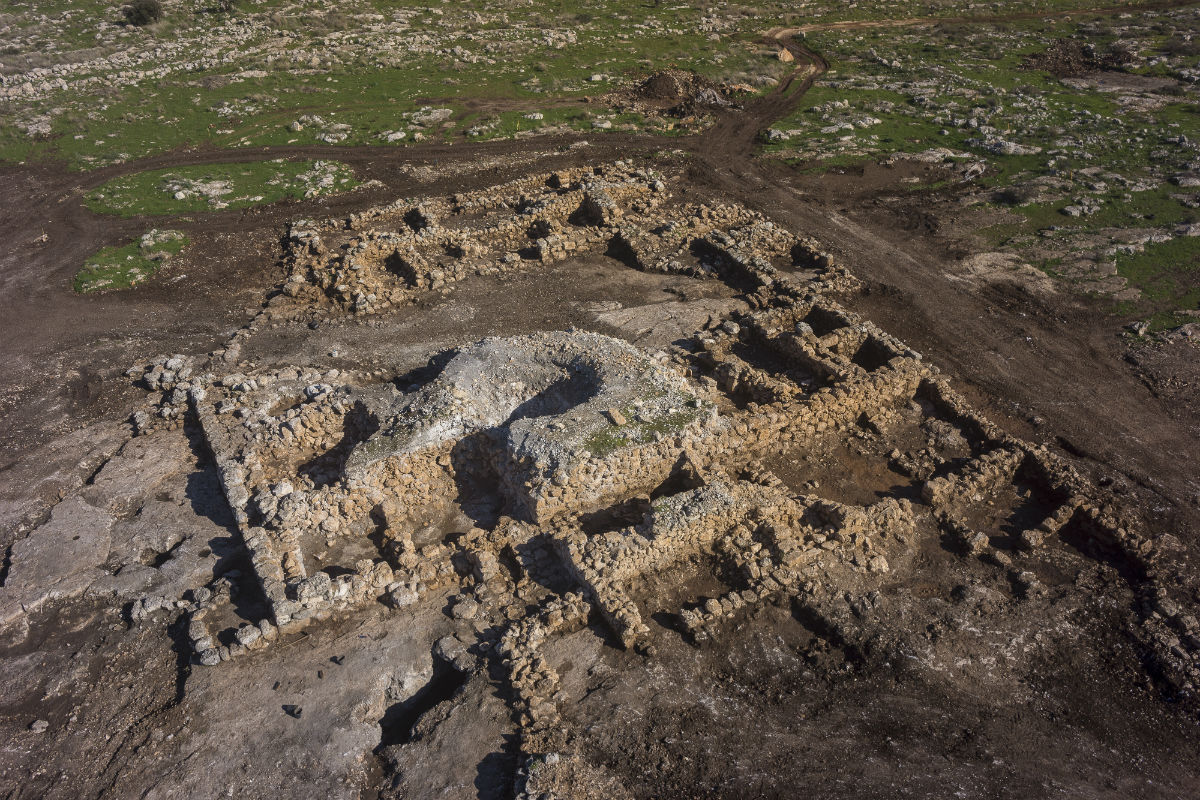2,700-Year-Old Farmhouse Unearthed in Israel

After spending thousands of years buried in ancient hills, remnants of buildings dating back to the Byzantine era and earlier emerged from hiding, excavated outside Rosh Ha'ayin in central Israel, about 10 miles (17 kilometers) inland from Tel Aviv.
A recent announcement by the Israel Antiquities Authority (IAA) described a many-chambered farmhouse, estimated to be 2,700 years old, measuring about 100 by 180 feet (30 by 50 meters) and containing a cluster of 24 rooms connected to a central courtyard. The walls were preserved to a height of about 6.6 feet (2 m).
The courtyard once held a storage compartment for protecting grain, Amit Shadman, IAA excavation director, said in the statement. Other artifacts found nearby include a number of millstones used for grinding flour, suggesting that growing and processing grain were "fairly widespread" in the region, Shadman said. "It seems that carbohydrates were as popular then as now," he added. [See Photos of the Farmstead and Church Mosaics in Rosh Ha'ayin]
Excavators also revealed oil presses carved from rock and a pair of silver coins stamped with images of the goddess Athena and an owl — her sacred bird — dating to the fourth century BCE.
Another multiroom structure protruding from a nearby hill was a monastery approximately 1,500 years old. The building once held stables, living quarters, an oil press and a church with colorful mosaic floors. Tiles were laid in intricate geometric patterns, with one pattern spelling out a Greek inscription welcoming visitors in the name of "Theodosius the priest."
The new finds take their place among many others that have emerged in recent years, representing Israel's ancient past. Another farmhouse dating to the eighth century BCE was discovered near Rosh Ha'ayin in early December 2014. Its 23 rooms also radiated outward from a central courtyard that once held a grain silo, and multiple winepresses were found close by. Eventually abandoned as a monastery, the structure was partially destroyed hundreds of years later, when inhabitants during the Ottoman period built a limekiln on the site.
Shadman explained in the statement that the farmstead and monastery represent two waves of inhabitants that settled in the region over time. The older farmstead, and others like it, flourished for hundreds of years, but were largely abandoned when people fled the area during the Hellenistic period.
Sign up for the Live Science daily newsletter now
Get the world’s most fascinating discoveries delivered straight to your inbox.
After many more centuries passed, a wave of Christian settlers arrived during the fifth century CE. At the time, Christianity was spreading rapidly across Israel, evident in the number of surviving ancient monasteries and churches that archaeologists continue to uncover.
The newfound archeological artifacts will be preserved where they stand "for the benefit of the public," even as the city of Rosh Ha'ayin expands to surround them, the IAA statement read. The inscription in the church's ancient mosaic will once more greet visitors with the message, "Peace be with you when you come, peace be with you when you go."
Follow Mindy Weisberger on Twitter and Google+. Follow us @livescience, Facebook & Google+. Original article on Live Science.

Mindy Weisberger is an editor at Scholastic and a former Live Science channel editor and senior writer. She has reported on general science, covering climate change, paleontology, biology and space. Mindy studied film at Columbia University; prior to Live Science she produced, wrote and directed media for the American Museum of Natural History in New York City. Her videos about dinosaurs, astrophysics, biodiversity and evolution appear in museums and science centers worldwide, earning awards such as the CINE Golden Eagle and the Communicator Award of Excellence. Her writing has also appeared in Scientific American, The Washington Post and How It Works Magazine. Her book "Rise of the Zombie Bugs: The Surprising Science of Parasitic Mind Control" will be published in spring 2025 by Johns Hopkins University Press.









